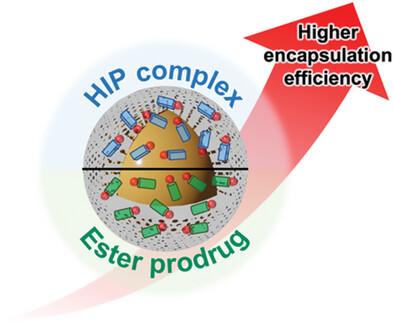Controlled Release of Hydrophilic Drug from Hollow Nanodots
IF 13
2区 材料科学
Q1 CHEMISTRY, MULTIDISCIPLINARY
引用次数: 0
Abstract
Here the challenge of limited encapsulation efficiency of ionizable hydrophilic molecules in silica materials is addressed. Two effective strategies are showcased that allow high encapsulation efficiency of salicylic acid, while simultaneously maintaining the morphology and particle size of silica nanocapsules. These promising approaches involve the formation and encapsulation of a prodrug or the complexation of the hydrophilic payload with a hydrophobic moiety to form a complex that is dissociated in acidic conditions. Well-defined core–shell silica nanocapsules with a diameter of 6 nm are obtained and exhibited an encapsulation efficiency of over 90%. High amounts of salicylic acid are released in acidic conditions from silica nanocapsules entrapping the prodrug or the complex, leading to pH-responsive characteristics. This work demonstrates promising strategies for the encapsulation and the controlled release of hydrophilic fertilizers, pesticides or drugs.

求助全文
约1分钟内获得全文
求助全文
来源期刊

Small
工程技术-材料科学:综合
CiteScore
17.70
自引率
3.80%
发文量
1830
审稿时长
2.1 months
期刊介绍:
Small serves as an exceptional platform for both experimental and theoretical studies in fundamental and applied interdisciplinary research at the nano- and microscale. The journal offers a compelling mix of peer-reviewed Research Articles, Reviews, Perspectives, and Comments.
With a remarkable 2022 Journal Impact Factor of 13.3 (Journal Citation Reports from Clarivate Analytics, 2023), Small remains among the top multidisciplinary journals, covering a wide range of topics at the interface of materials science, chemistry, physics, engineering, medicine, and biology.
Small's readership includes biochemists, biologists, biomedical scientists, chemists, engineers, information technologists, materials scientists, physicists, and theoreticians alike.
 求助内容:
求助内容: 应助结果提醒方式:
应助结果提醒方式:


